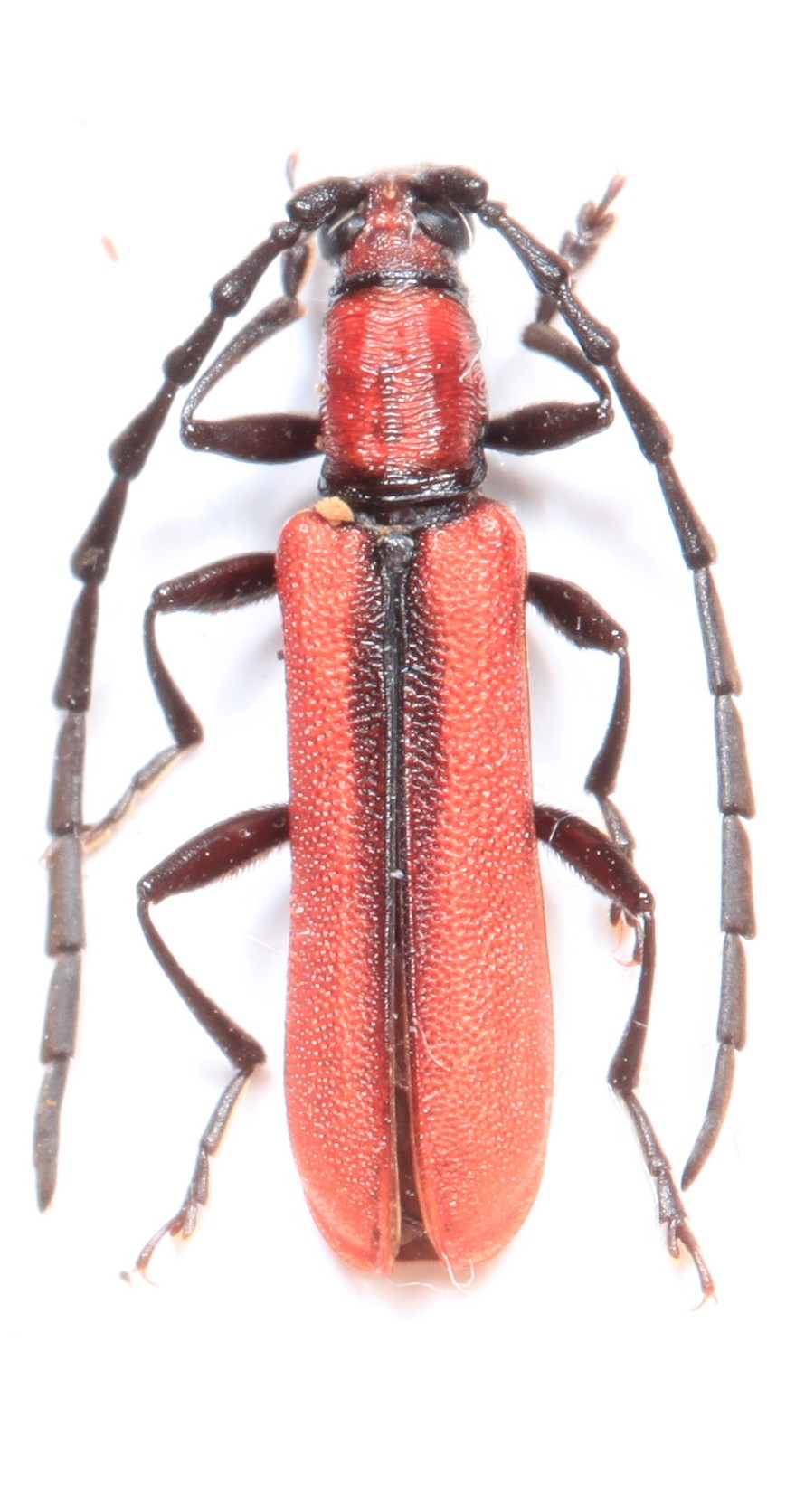| Author |
 Topic Topic  |
|
Max
Member Rosalia
  
Russia
721 Posts |
 Posted - 22/06/2014 : 23:50:43 Posted - 22/06/2014 : 23:50:43



|

394.56 KB
Some Pyrestes from Sa Pa region, comparatively small (11 mm), with deep buried scutellum and with carina-like suture in the middle. |
Edited by - Xavier on 25/06/2014 13:16:19 |
|
|
Sergi
Member Rosenbergia
   
Spain
1744 Posts |
 Posted - 23/06/2014 : 09:22:05 Posted - 23/06/2014 : 09:22:05



|
| Maybe Pyrestes festus |
 |
|
|
Xavier
Scientific Collaborator
    
France
12205 Posts |
 Posted - 23/06/2014 : 20:07:21 Posted - 23/06/2014 : 20:07:21



|
| Is it the same species here ? |
 |
|
|
Sergi
Member Rosenbergia
   
Spain
1744 Posts |
 Posted - 24/06/2014 : 09:54:40 Posted - 24/06/2014 : 09:54:40



|
| Hi Xavier!! Yes, I think that your picture is the same species. This black blur colour on the elytra sutura is a great feature for determine the species, Pyrestes festus Holzschuh, 1998 |
Edited by - Xavier on 24/06/2014 13:21:22 |
 |
|
|
Xavier
Scientific Collaborator
    
France
12205 Posts |
 Posted - 24/06/2014 : 13:15:47 Posted - 24/06/2014 : 13:15:47



|
Thanks a lot , Sergi  |
 |
|
|
Max
Member Rosalia
  
Russia
721 Posts |
 Posted - 24/06/2014 : 17:21:33 Posted - 24/06/2014 : 17:21:33



|
| Thanks, friends, for your help. |
 |
|
|
horshehden
Member Purpuricenus
 
Czech Republic
424 Posts |
 Posted - 25/06/2014 : 13:02:54 Posted - 25/06/2014 : 13:02:54



|
| Sorry, but you should start again. This is not P. festus. Besides many other features, antennae are black in P. festus. |
 |
|
|
Xavier
Scientific Collaborator
    
France
12205 Posts |
 Posted - 25/06/2014 : 13:15:58 Posted - 25/06/2014 : 13:15:58



|

Thanks Tom 
...but, could you help us ? |
Edited by - Xavier on 25/06/2014 13:47:22 |
 |
|
|
Sergi
Member Rosenbergia
   
Spain
1744 Posts |
 Posted - 25/06/2014 : 13:47:13 Posted - 25/06/2014 : 13:47:13



|
Hi again, Pyrestes festus have antennae black and red!!!! Look the work Beschreibung von 68 neuen Bockkafern aus Asien, Uberwiegend aus China und zur Synonymie einiger Arten. Holzchuh, 1998. Here you can see a female of Pyrestes festus (the picture are in white and black), but you can apreciate the two colors, black and red, of the antennae. Also, the black blur in the suture of elytra is other point of determination, not seen with this patern in other species of Pyrestes.
This is my point of view.
Reviews are accepted!!! |
 |
|
|
Xavier
Scientific Collaborator
    
France
12205 Posts |
 Posted - 25/06/2014 : 14:15:56 Posted - 25/06/2014 : 14:15:56



|
| not to mix different species, I add to my post original picture and description of Pyrestes festus Holzschuh 1998 |
 |
|
|
horshehden
Member Purpuricenus
 
Czech Republic
424 Posts |
 Posted - 25/06/2014 : 21:59:07 Posted - 25/06/2014 : 21:59:07



|
What about this one?

222.15 KB |
 |
|
|
Sergi
Member Rosenbergia
   
Spain
1744 Posts |
 Posted - 26/06/2014 : 16:03:24 Posted - 26/06/2014 : 16:03:24



|
| From what country?? |
 |
|
|
horshehden
Member Purpuricenus
 
Czech Republic
424 Posts |
 Posted - 26/06/2014 : 18:54:49 Posted - 26/06/2014 : 18:54:49



|
| Yunnan, just shortly north from the type locality of P. festus. |
 |
|
|
Sergi
Member Rosenbergia
   
Spain
1744 Posts |
 Posted - 26/06/2014 : 20:05:03 Posted - 26/06/2014 : 20:05:03



|
| Ok, it's curious that this specimen is very similar to the other one, less the coloration of antennae. Maybe a color variant for the same species??? a mystery!!! |
Edited by - Sergi on 26/06/2014 20:05:56 |
 |
|
|
Gerard
Scientific Collaborator
    
France
5298 Posts |
 Posted - 26/06/2014 : 20:05:22 Posted - 26/06/2014 : 20:05:22



|
Hello to all.
For me these are two different species. The granulosites of the elytra is more coarse on the first beast. The color of the legs and antennae, but also the fifth article of the antennas are also different. |
 |
|
|
Sergi
Member Rosenbergia
   
Spain
1744 Posts |
 Posted - 26/06/2014 : 20:09:02 Posted - 26/06/2014 : 20:09:02



|
| Hi Gerard! I think that the fifth article of antennae is very similar, looks different, I think, by the position of the picture. |
 |
|
 Topic Topic  |
|


